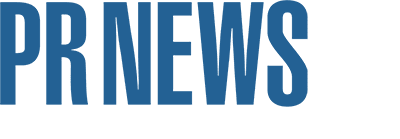Healthcare PR Measurement Protects Budget Levels Despite Deep Cuts
Although PR pros have come a long way in earning executive respect, the need to measure PR's effectiveness has never been more critical. This is particularly true in healthcare, where budgets are being squeezed to compensate for deep cuts in federal reimbursements.
In this penny-pinching climate, the pressure is on to show how healthcare communications is a wise investment in the organization's bottom line.
PR NEWS spoke with Lisa Wyatt, VP of public affairs and marketing for the Washington Hospital Center, about how her department handles PR measurement and leverages the results to preserve budget levels and executive confidence.
PRN: What communications does your department measure?
LW:
We try to measure everything, including the number of advertising calls our marketing campaigns generate for hospital admissions; new media coverage and its advertising equivalency; internal surveys; and how physician appointments are affected by media coverage. We also submit a lot of work for industry awards that requires measurement analysis.
PRN: How important is measurement to upper management and how often do you submit reports?
LW:
[Measurement reports] give upper management an important opportunity to see the cost-benefit ratio of PR and marketing and how valuable the function is to the bottom line. Washington Hospital Center is one of the few hospitals that are profitable in this market and these kinds of investments contribute to its success. We provide intermittent reports and one big annual report.
PRN: How have your measurement efforts affected your departmental budgets?
LW:
At a time when many hospitals are having to scale back their marketing activities because of deep cuts, we've been able to maintain our budget levels [of $1.5M in advertising and $1.5M in PR and marketing activities] over the last few years. I believe that part of the reason we've been able to maintain our budget levels is because of how we measure our progress.
PRN: What measurement tools do you find most useful?
LW:
We use Burrelle's news analysis, a large Gallup survey every two years and Centromax, which measures the phone calls we get from our advertising campaigns.
PRN: There is some debate over using advertising equivalencies to measure PR value. How effective is this particular measurement analysis for your reporting needs?
LW:
Advertising equivalents are a good barometer of PR value, but it is just one way of going about it. [This department] generates a lot of media exposure. Last year we generated $6 million worth [of advertising equivalents] in media coverage with a media relations budget of $250,000. It's a viable means of determining PR impact.
PRN: Describe a situation in which you measured a PR strategy and used the results to make improvements. How did you determine those improvements were effective?
LW:
Internally, we measure all of our events, management seminars and publications with surveys. We use this feedback to improve topics for our events and enhance our various publications. We also are looking at posting a survey on our Web site to collect better data on how to improve it.
PRN: What are your measurement priorities?
LW:
We are first interested in measuring the number of calls our ads generate - then in public opinion information, amount of news coverage [generated], employee satisfaction and customer satisfaction. Last year, our marketing programs generated 19,000 phone calls to our physician referral service and 800 physician appointments were made for doctors who participated in media coverage.
PRN: What area do you need to measure more?
LW:
We'd like to measure the effectiveness of our brochures, but that's a tough one. Overall, we're pretty satisfied with what we measure and the results we get.
(Lisa Wyatt will be speaking at the PR NEWS/Delahaye "Best Practices in PR Measurement" conference on November 16. She can be reached at 202/877-6305)
